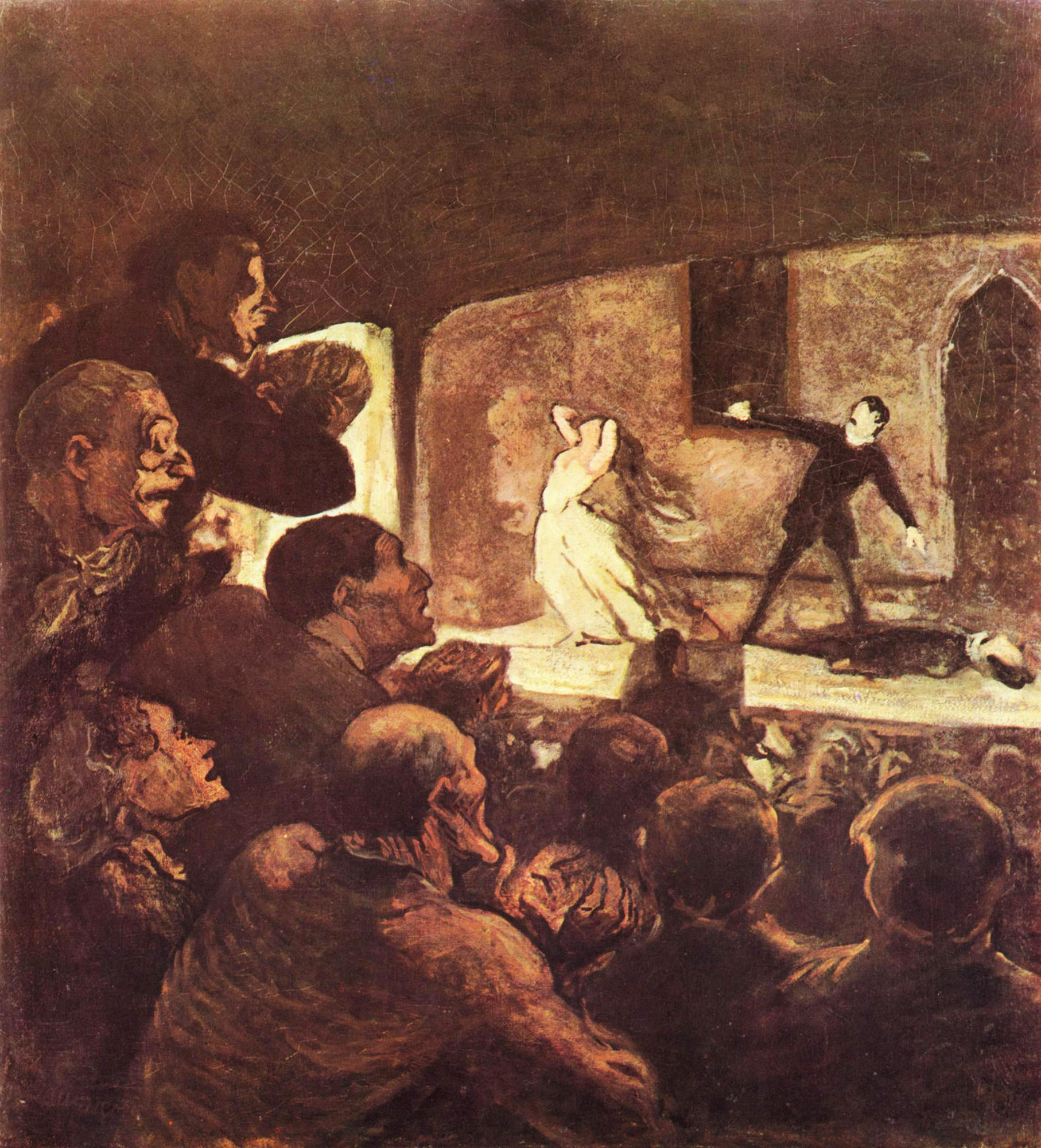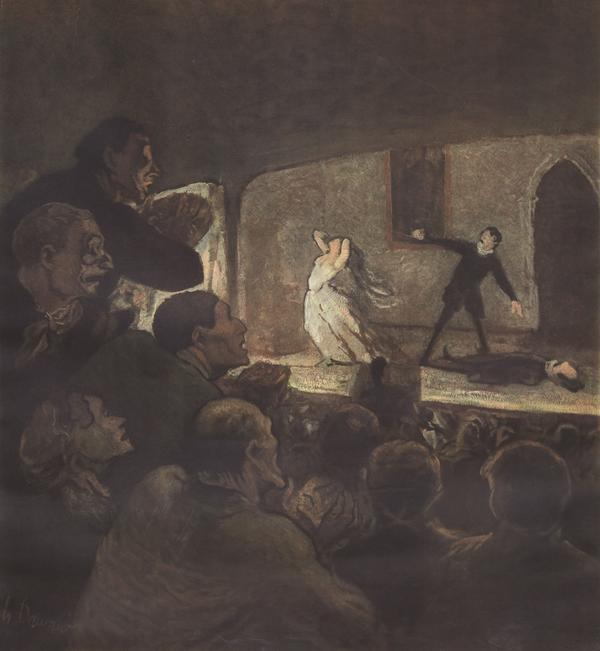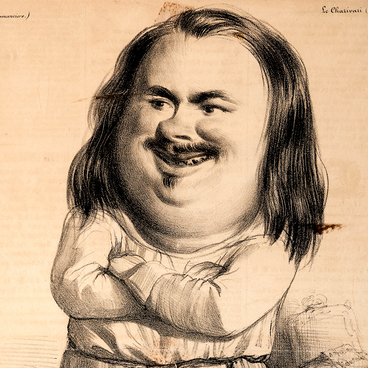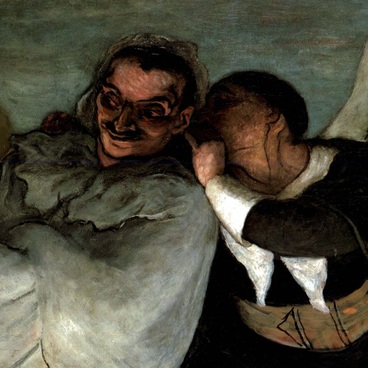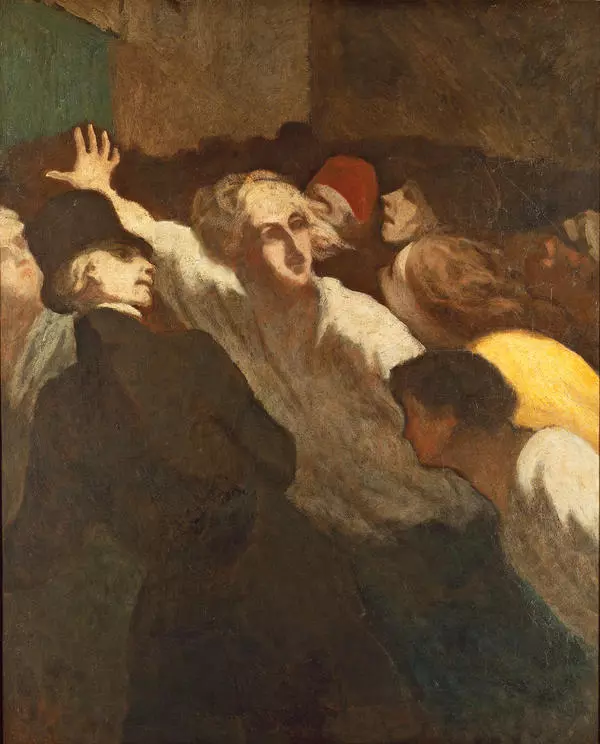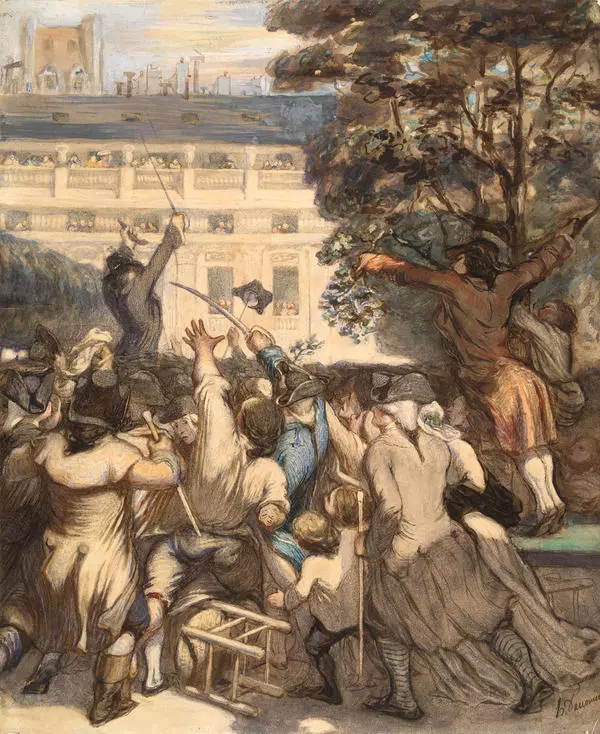This painting is a perfect example of Eisenstein’s favorite deep composition: with the contrast of dark profiles on the balcony and the brightly lit scene, the artist created an almost stereoscopic effect. What the director found most important in Daumier’s /do’mjez/ canvas was that in the foreground there was the audience absorbed by the performance, not the actors playing “murder out of jealosy.” This echoes the ideas of the manifesto MontAge of Attractions (1923), which begins with the words: “The spectator himself constitutes the basic material of the theater.”
The French painter, graphic artist, sculptor Honoré /ono’re/ Daumier /do’mje/ (1808 — 1879) was one of Sergei Eisenstein’s favorite artists. The director remembered that the first book he bought on his own as a child was a book with his drawings. Later he gathered a large collection of books, albums, original prints and reproductions by Daumier. In 1935, when he got an apartment in Mosfilm’s house on Potylikha Street, he decorated his office with facsimile reproductions of two paintings by Daumier: he found them in the catalog of London bookseller Zwemmer and asked to send them as a fee for publishing his articles in England.
Daumier created The Melodrama in 1860 (the original is now held in the Munich Museum Neue Pinakothek). It reflects the artist’s love for stage art — not for the court academic theaters, but for the so-called boulevards, as they were located in Paris on the Grand Boulevards. They did not stage sublime tragedies for aristocrats there, but rather played sensitive melodramas, fascinating detectives and prickly comedies about modern manners and these genres were loved by the ordinary audience.
In the background of Dumier’s there is a performance on stage. The plot of the melodrama is known from Daumier’s graphic sketch on the same subject. A man with a sword, pointing to a corpse, shouts out to a woman who broke her arm: ‘Il était votre amant, Madame! ’ (‘He was your lover, Madame! ’). The foreground depicts Parisians excited by the sight of ‘murder out of jealousy.
Eisenstein also loved and knew well the repertoire of the boulevard theaters and believed that the genres of these performances and the style of play of their best actors largely determined the future of cinema.
The French painter, graphic artist, sculptor Honoré /ono’re/ Daumier /do’mje/ (1808 — 1879) was one of Sergei Eisenstein’s favorite artists. The director remembered that the first book he bought on his own as a child was a book with his drawings. Later he gathered a large collection of books, albums, original prints and reproductions by Daumier. In 1935, when he got an apartment in Mosfilm’s house on Potylikha Street, he decorated his office with facsimile reproductions of two paintings by Daumier: he found them in the catalog of London bookseller Zwemmer and asked to send them as a fee for publishing his articles in England.
Daumier created The Melodrama in 1860 (the original is now held in the Munich Museum Neue Pinakothek). It reflects the artist’s love for stage art — not for the court academic theaters, but for the so-called boulevards, as they were located in Paris on the Grand Boulevards. They did not stage sublime tragedies for aristocrats there, but rather played sensitive melodramas, fascinating detectives and prickly comedies about modern manners and these genres were loved by the ordinary audience.
In the background of Dumier’s there is a performance on stage. The plot of the melodrama is known from Daumier’s graphic sketch on the same subject. A man with a sword, pointing to a corpse, shouts out to a woman who broke her arm: ‘Il était votre amant, Madame! ’ (‘He was your lover, Madame! ’). The foreground depicts Parisians excited by the sight of ‘murder out of jealousy.
Eisenstein also loved and knew well the repertoire of the boulevard theaters and believed that the genres of these performances and the style of play of their best actors largely determined the future of cinema.
